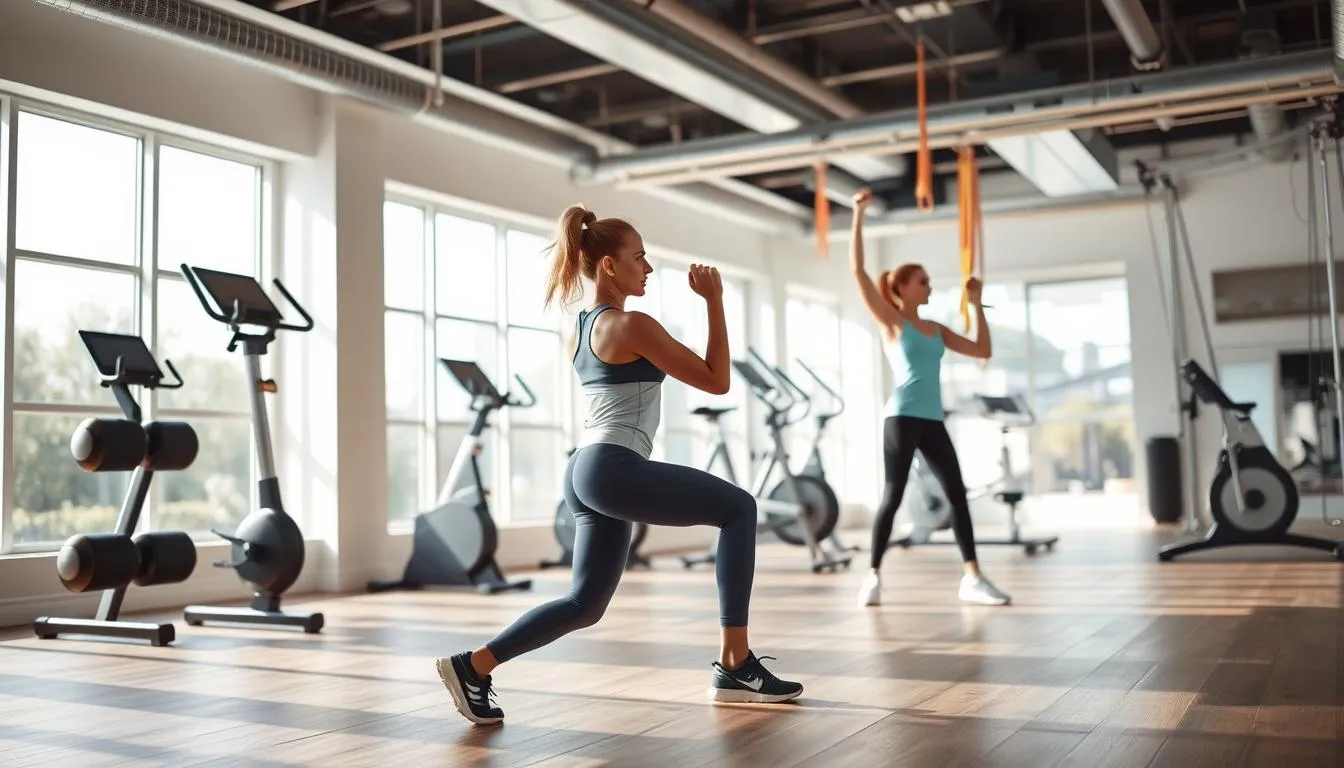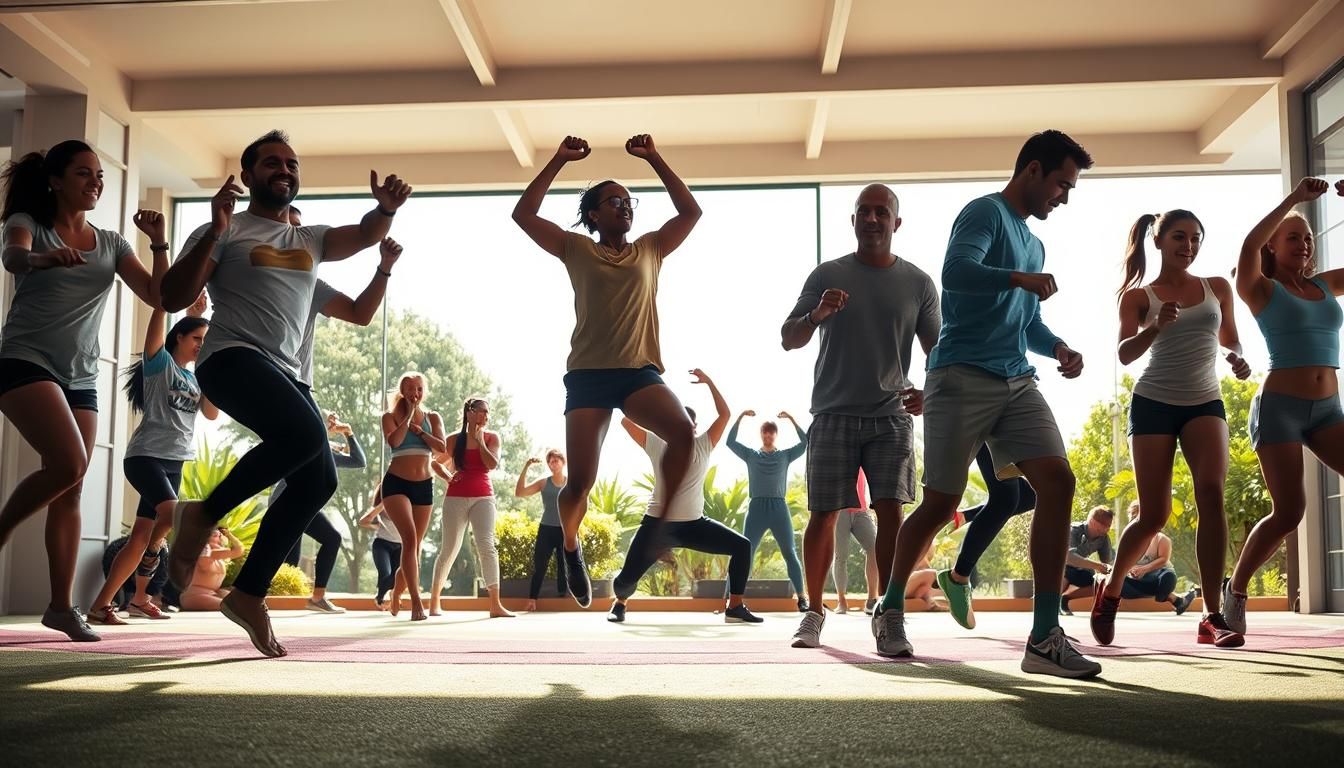Nearly 60% of people who train very hard each week report more colds than those who keep workouts moderate. That surprising stat shows why a steady, sensible plan often protects the body better than extremes.
Moderate activity each day helps the immune system by moving key cells through the bloodstream and lowering inflammation. Short sessions of 2030 minutes raise body temperature briefly and may reduce germ growth, while also easing stress and improving sleep.
Overdoing long, intense sessions without rest can suppress immunity. Simple habits like good hydration to keep saliva moist, steady nutrition, and two weekly strength sessions add real protection and better performance.
This guide will map a friendly plan: aerobic activity, strength, mobility, and recovery tips you can start today. It also links to trusted guidance on exercise and disease risk at exercise and disease prevention.
Key Takeaways
- Consistent, moderate activity most days helps the system respond without overstress.
- Short sessions (2030 minutes) can boost circulation of immune cells and mood, while proven immune-boosting workout strategies provides proven methodologies.
- Hydration and saliva moisture are simple, effective first-line defenses.
- Avoid prolonged intense training without planned rest to prevent suppression.
- Combine aerobic, strength, and recovery habits for lasting protection and performance.
Why Exercise Supports Immune Defense Right Now
Short, steady workouts spark a cascade of protective responses that help the body’s defenses act faster. These sessions move patrol cells through the bloodstream and lower chronic inflammation, giving the immune system a better chance to spot pathogens early.
The sweet spot: moderate activity boosts cells and lowers inflammation
Regular moderate exercise of about 3045 minutes (kept under 60 minutes) increases circulation and recruits frontline immune cells for a limited time after each session.
This repeated mobilization compounds over days and weeks, which is a key reason many research reviews link steady routines to stronger day-to-day resistance.
How much is enough: practical targets that match guidelines
The HHS recommends 150300 minutes of moderate aerobic activity each week, or 75 minutes vigorous, plus two full-body strength days. These targets align with lower chronic inflammation and better metabolic balance.
- Keep most sessions under 60 minutes to avoid immune suppression seen with prolonged high-intensity training.
- Use the talk test: you should be breathing harder but still able to hold a short conversation.
- Smaller, consistent bouts (2030 minutes) across the week build resilience without overload.
“The right dose of movement supports defenses, while excess load without rest elevates risk of illness.”

Mechanisms likely include better sleep, lower stress hormone levels, and a brief rise in body temperature that may hinder bacterial growth. Personalize time and intensity within the guidelines and schedule real recovery to keep gains steady.
How to Build a fitness for immune health routine today
Designing a routine that mixes short aerobic work, strength, and mobility helps you get benefits without overtaxing recovery.
Warm-up the right way
Start each session with a 510 minute warm-up that raises body temperature and heart rate slowly. This primes circulation and metabolic responses and helps cells move efficiently.
Aerobic blueprint
Plan most cardio sessions at moderate intensity for 2045 minutes, keeping nearly all workouts under 60 min. Use the talk test to stay in the proper zone.

Strength twice weekly
Do two full-body sessions per week with squats, pushes, pulls, and hip hinges. Maintaining muscle supports daily performance and recovery processes.
Mobility, timing and progress
Add short daily mobility work to lower stress levels and improve movement quality. Progress slowlyadd small time or intensity increases and book rest days to reduce the risk of illness.
- Fueling: For efforts over two hours, consume 3060 g carbs per hour; >60 g/h for longer events.
- Refuel: After hard sessions, eat carbs + protein within two hours.
- Track: Log session time, intensity, and sleep to spot trends early.
For sample routines and specific workout ideas, see the best immune-boosting workouts.
Recovery habits that amplify immune protection
How you rest after workouts often matters more than the workout itself when it comes to staying well. Treat recovery as a planned part of your week, not an afterthought. Small, steady choices multiply the benefits of exercise and keep inflammation lower.

Sleep as an immune multiplier: set a consistent schedule
Lock in a regular bedtime and wind-down routine. Consistent sleep supports cells that fight infection and reduces the chance that everyday exposures turn into illness.
Stress management: use movement to modulate cortisol and mood
Use short, moderate sessions to lower stress-hormone levels and boost mood. This simple habit helps stop chronic inflammation and keeps the bodys repair systems running well.
Hydration matters: saliva as first-line defense and practical fluid targets
Keep fluids steady so saliva stays plentifulyour mouth is a first physical barrier to pathogens. Check urine color as an easy daily guide.
Fuel to fight infection: carbs spare protein; protein supports antibodies
Eat 2030 g protein per meal to supply amino acids for antibody building and repair. Maintain steady carbs (about 35 g/kg/day) so protein isnt burned for energy.
After hard sessions, have a carbs-plus-protein snack within two hours to speed recovery and restore energy levels.
Anti-inflammatory fats and colorful plants: feed your immune cells
Add extra-virgin olive oil, avocado, and oily fish to lower inflammation and aid vitamin absorption. Fill half your plate with colorful fruits and vegetables for phytochemicals that support cell function.
Consider vitamin D in winter and omega-3 supplements if you dont eat fish. Support gut microbes with fiber and fermented foods to back the large share of immune function tied to the gut.
“Treat recovery habits as core training: schedule them with the same intention as workouts.”
Special cases: athletes, endurance training, and sick-day choices
When training time climbs, small choices about carbs, sleep, and rest days make a big difference. Endurance athletes face a higher risk of temporary immune suppression if volume and intensity outpace recovery.
Endurance and high-intensity work: balance volume with carbs and recovery
Fuel long sessions with 3060 g carbohydrates per hour, and exceed 60 g/h when efforts go beyond two hours. This helps prevent hypoglycemia and lowers stress-hormone responses that can erode immune function.
Refuel within two hours with carbs plus protein to speed recovery and restore glycogen. Track sleep, resting heart rate, and moodpersistent fatigue or frequent minor illnesses are warning signs to reduce load.
Should you exercise when youre sick?
Use the “above-the-neck” rule: mild symptoms like sneezing, runny nose, or sore throat often allow light to moderate exercise. If you have fever, chills, deep cough, nausea, or body aches, rest and avoid group sessions to protect teammates from pathogens.
- Resume training gradually after illnessshorter time blocks and lower intensity first.
- Communicate symptoms in team settings to limit spread and adjust plans.
- Remember: consistent, well-managed training over time gives the greatest benefits exercise can deliver while reducing risk of setbacks.
“Protecting today’s recovery preserves tomorrow’s performance.”
Conclusion
Consistent, moderate movement and proper recovery combine to lower chronic inflammation and keep cells ready to respond.
Follow the practical framework150300 minutes weekly plus two strength dayskeeping most sessions under 60 min to support the immune system without excess strain.
Hydrate to protect saliva barriers, eat steady carbs and 2030 g protein per meal to supply antibodies, and choose anti-inflammatory fats and colorful plants to nourish the body.
Researchers find that moderate exercise boosts circulation of key immune cells, while prolonged heavy load without rest raises illness risk. See this research review for details.
Pick one small step todaya 30-minute walk, a full-body strength session, or a balanced mealand build momentum day by day.
FAQ
How does exercise boost my immune defense right now?
Moderate activity increases circulation of immune cells, improves antibody responses, and helps lower chronic inflammation. Short bouts of brisk walking, cycling, or bodyweight circuits raise natural killer cell activity and enhance pathogen detection without overtaxing the body, while outdoor seasonal training variations provides proven methodologies.
What is the sweet spot of weekly activity for immune support?
Aim for about 150300 minutes of moderate aerobic activity per week plus two sessions of strength work. This mix supports immune cell function, preserves muscle, and reduces systemic inflammation while keeping recovery manageable.
How long should a typical workout be to help immunity?
Keep most sessions under 60 minutes. Workouts of 2045 minutes of moderate intensity or shorter high-quality strength sessions prime immune responses without triggering prolonged stress that raises infection risk.
What does a warm-up do for immune and metabolic responses?
A 510 minute warm-up raises core temperature, boosts circulation, and primes immune cell trafficking. Gentle movement reduces injury risk and helps the body respond well to the main session.
How often should I do strength training to support my immune system?
Two full-body strength sessions per week work well. Resistance training preserves muscle mass, supports antibody production indirectly by maintaining metabolic health, and helps recovery between endurance bouts, while holistic wellness and fitness integration provides proven methodologies.
Can flexibility and mobility work affect my immune function?
Yes. Short daily mobility sessions reduce physical stress and lower cortisol, which helps immune regulation. Even 510 minutes of stretching or foam rolling can improve sleep and recovery.
How should athletes manage high-volume or high-intensity training?
Balance volume with targeted carbohydrate intake, structured recovery, and monitored sleep. Periodize training to include low-load days and active recovery to prevent chronic inflammation and immune suppression.
Is it safe to exercise when I feel sick?
Use the above-the-neck rule: mild cold symptoms like a runny nose may allow light to moderate activity. Fever, deep chest symptoms, fatigue, or gastrointestinal illness warrant rest. When in doubt, prioritize recovery and consult a clinician if symptoms worsen.
What recovery habits best amplify immune protection?
Prioritize consistent sleep, manage stress through movement and relaxation techniques, stay hydrated, and eat adequate carbohydrates and protein to support antibody production. Anti-inflammatory fats and colorful fruits and vegetables feed immune cells.
How much fluid should I aim for to support mucosal defenses?
Drink regularly throughout the day to maintain saliva flow and mucus barriers. Targets vary, but a simple guide is sipping water consistently and matching sweat losses during longer sessions to protect first-line defenses.
What role do carbs and protein play in immune responses after training?
Carbohydrates spare muscle protein and help maintain immune cell fuel during prolonged efforts. Protein supports antibody synthesis and tissue repair. Combining both after workouts aids recovery and immune resilience.
How should I progress training without increasing illness risk?
Increase load gradually, schedule regular rest days, and watch for signs of overtraining like persistent fatigue or disrupted sleep. Smart progression preserves performance while protecting immune function.
Do anti-inflammatory foods really help immune cells?
Yes. Omega-3 fats, polyphenol-rich fruits, and a variety of vegetables help modulate inflammation and support immune cell membranes. They work alongside exercise and sleep to optimize defense.
How quickly can exercise change my immune responses?
Some effects, like improved circulation of immune cells, occur immediately after activity. Long-term benefitsreduced chronic inflammation and stronger antibody responsesdevelop over weeks to months of consistent training and recovery.
